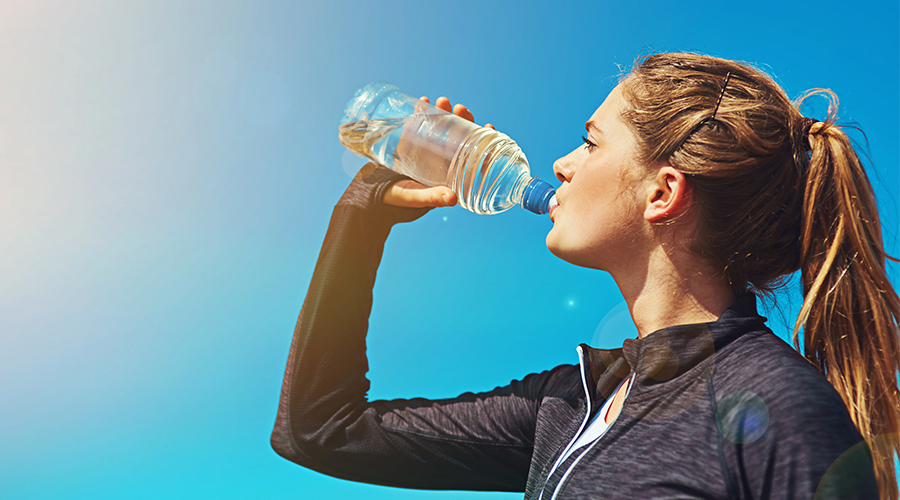DRINKS THAT CAN HELP LOWER OR CONTROL YOUR HIGH CHOLESTEROL LEVELS
- 04 May - 10 May, 2024
Staying cool at home is essential with the frequency of heat waves on the rise. Heat can impair the body's capacity to regulate temperature in extremely hot conditions and cause a variety of ailments, such as heat cramps, heat exhaustion, heatstroke, and hyperthermia. However, it doesn't follow that you should forgo summertime activities or feel compelled to raise your air conditioning expenses. Here are several methods to stay cool without air conditioning, per the advice of experts, ranging from modest, everyday tweaks to environmentally friendly house improvements.

Sweating causes electrolyte loss, which can make you feel exhausted. To get the overall amount of body water back to normal, sodium (an electrolyte) and water must both be replenished. You can accomplish this by eating and drinking. During the warmer months, it's also a good idea to have an insulated water bottle with you wherever you go. It not only helps you remember to stay hydrated throughout the day, but it also helps keep your drinks colder for a longer period of time.
According to Schumann, sunburns can interfere with your body's capacity to control its temperature. Sunburns cause your body to redirect fluid in an effort to cure the burned area, which reduces the amount of water available for sweating. Put on sunscreen, long sleeves or a hat even if you're just going outside briefly or going to the garden. Look for shady spots during the warmest part of the day, around lunchtime. To prevent heat exhaustion, try to exercise outside in the early morning or late at night.

In order to increase blood flow near the skin's surface on a hot day, your blood vessels may widen. This helps warm blood to cool and discharge heat. This explains why, when you're hot, you could appear pink or red. Because the blood arteries in the wrist and neck are important locations where blood vessels are physically close to the skin's surface, using an ice cube there could hasten the chilling process. On a hot day, your blood vessels may enlarge to improve blood flow close to the skin's surface. This assists blood in cooling and expelling heat. This explains why you could look more pink or crimson when you're hot. Using an ice cube near the blood vessels in the wrist and neck, which are vital areas where blood vessels are physically close to the skin's surface, could speed the cooling process.
In the sweltering summer months, taking a cold shower or bath can lower your body temperature and make you feel rejuvenated and chilled. You can also put some cold water in a spray bottle and mist yourself with it throughout the day to assist your body self-regulate and cool off. When the water evaporates, the skin's surface cools, much like when you perspire.

A house can become much cooler by deliberately re-roofing to reflect energy off the roof, albeit it is not cheap. Using spectrally-selected paints on the body of the house as well as the roofing can assist diffuse and reflect the heat of the sun, especially for older homes that are not as well insulated. In contrast to the ordinary black roof's ability to reflect only 5-8% of the sun's energy, a black roof can reflect up to 40% of it.
Focus on well-insulated, energy-efficient appliances and light bulbs. If possible, when it’s time to make a switch, look for appliances that are more energy efficient, meaning they require less energy to function and as such produce less heat.
A smaller place to start with can be switching to LED bulbs. They require an initial investment, but they last very long, use less electricity, and emit less heat into your house.
COMMENTS